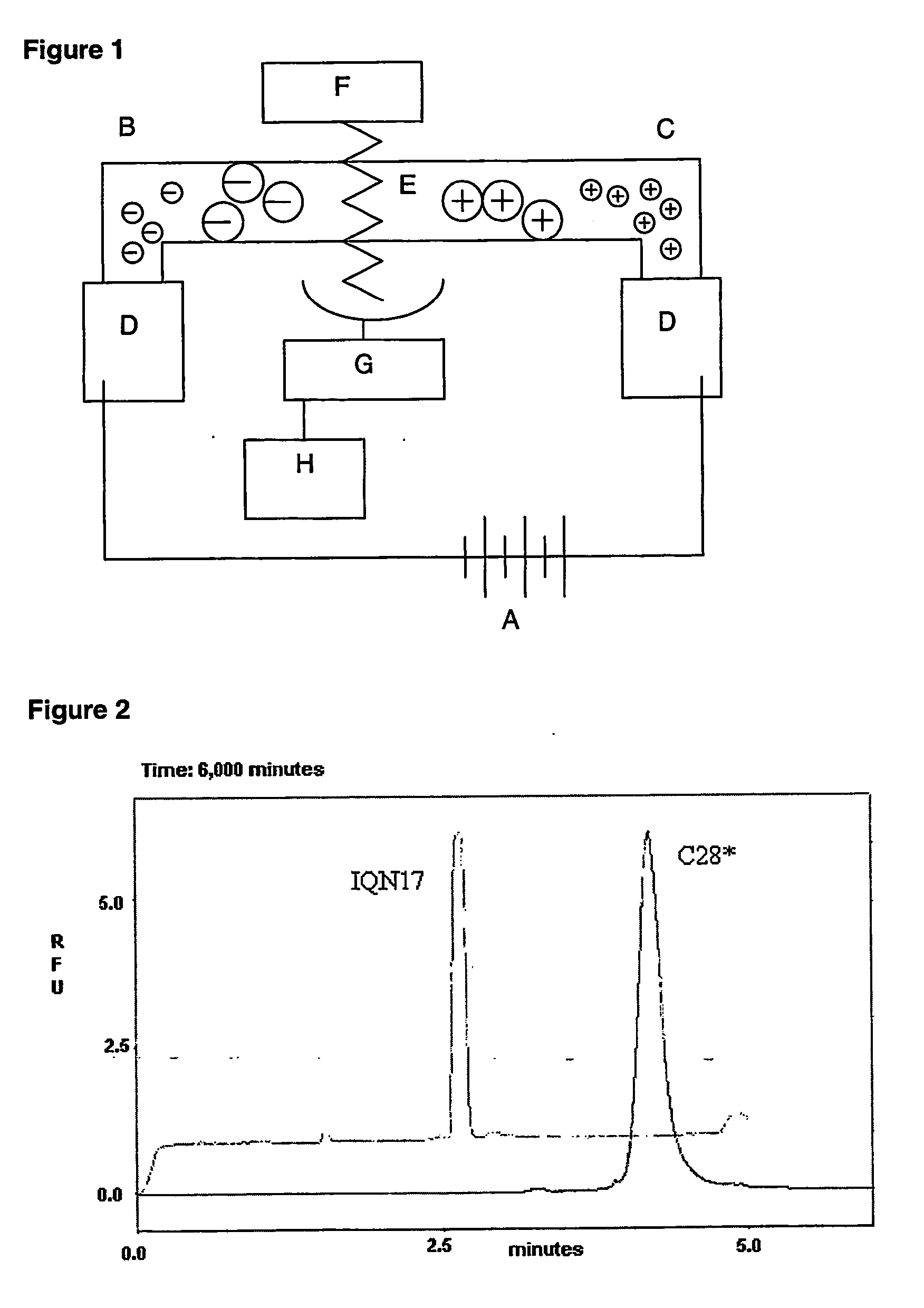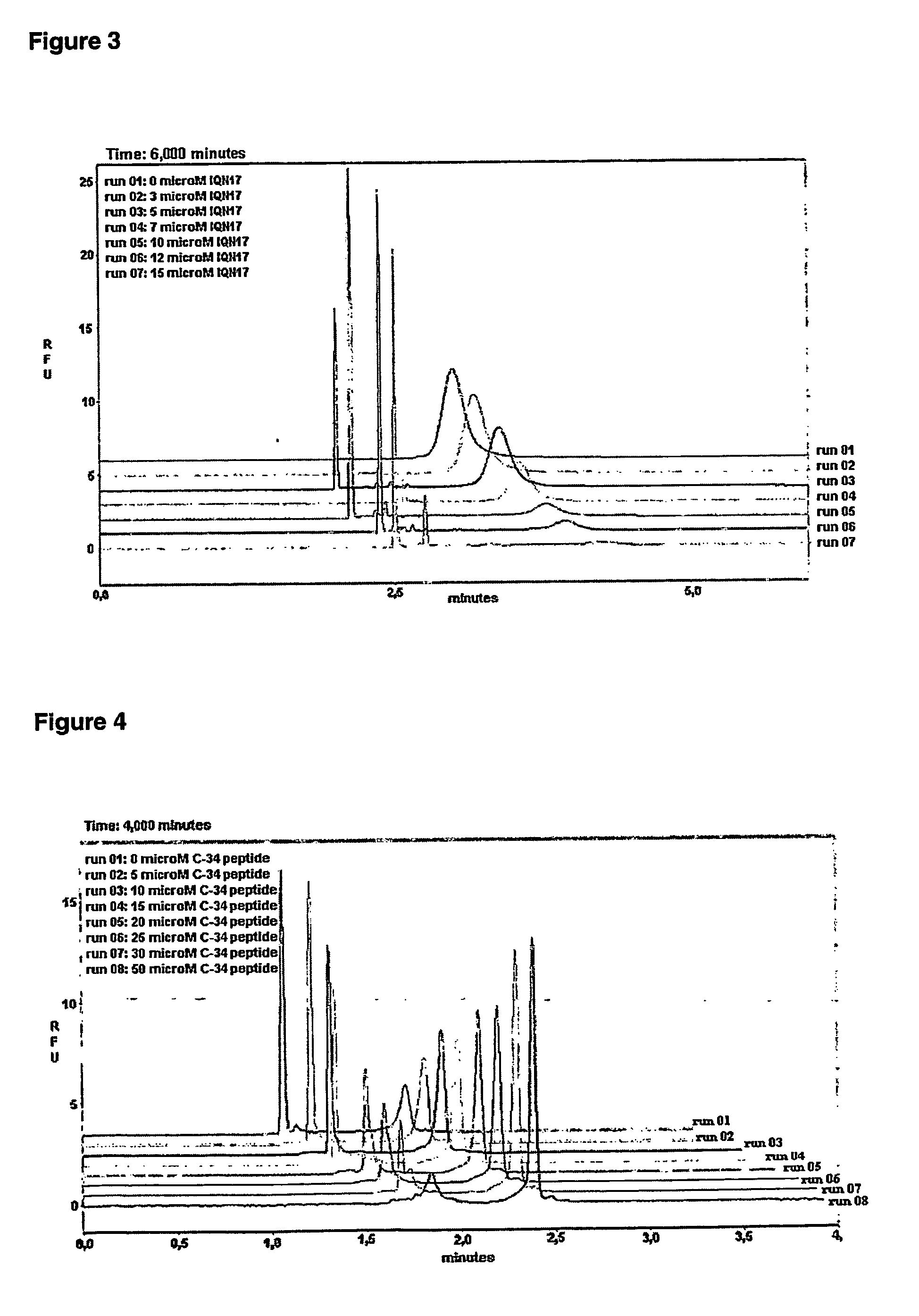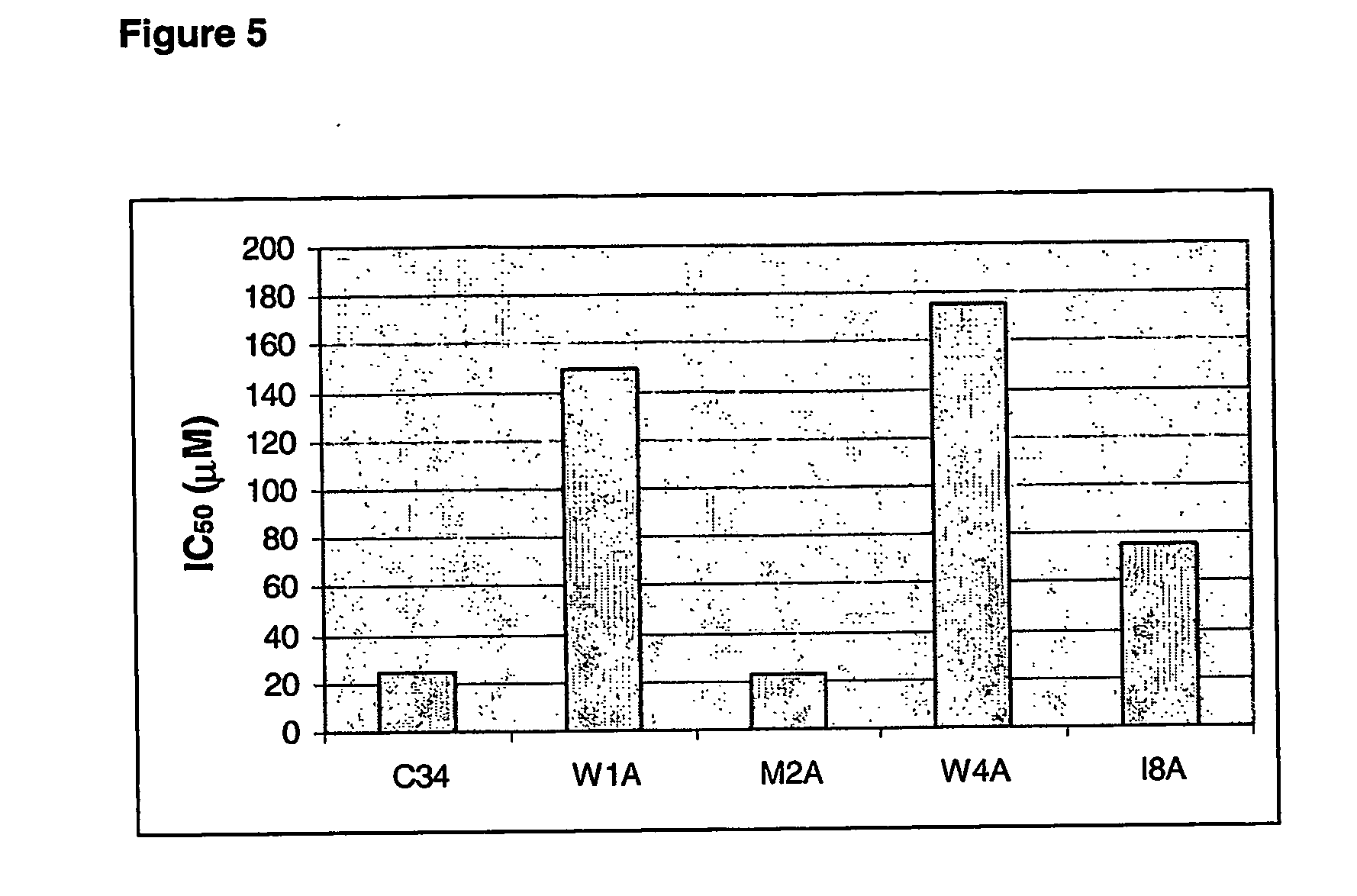Anti-fusion assay
a technology of anti-fusion and assay, which is applied in the field of anti-fusion assay, can solve the problems of low signal to noise ratio of traditional methods, and achieve the effects of low signal to noise ratio, easy detection, and increased sensitivity of screening assay
- Summary
- Abstract
- Description
- Claims
- Application Information
AI Technical Summary
Benefits of technology
Problems solved by technology
Method used
Image
Examples
examples
1. Competitive Binding Assay Using Capillary Zone Electrophoresis:
[0074] The binding affinity of a 28-residue peptide from the second heptad region of GP41 (C28) was measured using a chimeric peptide (IQN17) that contains a segment of GCN4 at the N-terminal and 17 residues of the first heptad repeat region of HIV-1 GP-41 at the C-terminal. Eckert et al., Cell 99, 103-115 (1999). C28 was labeled with the fluorescent molecule, Alexa-430 (Molecular Probes) at its carboxyl terminal (Alexa-C28). The binding was measured by titration of labeled C28 with IQN17. The concentration of bound and unbound C28 was measured by capillary zone electrophoresis.
[0075] Reagents and buffers. Sodium Borate and Boric Acid were purchased from Sigma. Binding and separation buffers were identical. Buffers were prepared by mixing equal weights of sodium borate and boric acid in ultrapure water (Ω<16 MΩ) and adjusting pH to 8.5. Dimethyl sulfoxide was purchased from Sigma.
[0076] Peptides. IQN-17 has been d...
PUM
| Property | Measurement | Unit |
|---|---|---|
| molecular weight | aaaaa | aaaaa |
| inner diameter | aaaaa | aaaaa |
| length | aaaaa | aaaaa |
Abstract
Description
Claims
Application Information
 Login to View More
Login to View More - R&D
- Intellectual Property
- Life Sciences
- Materials
- Tech Scout
- Unparalleled Data Quality
- Higher Quality Content
- 60% Fewer Hallucinations
Browse by: Latest US Patents, China's latest patents, Technical Efficacy Thesaurus, Application Domain, Technology Topic, Popular Technical Reports.
© 2025 PatSnap. All rights reserved.Legal|Privacy policy|Modern Slavery Act Transparency Statement|Sitemap|About US| Contact US: help@patsnap.com



